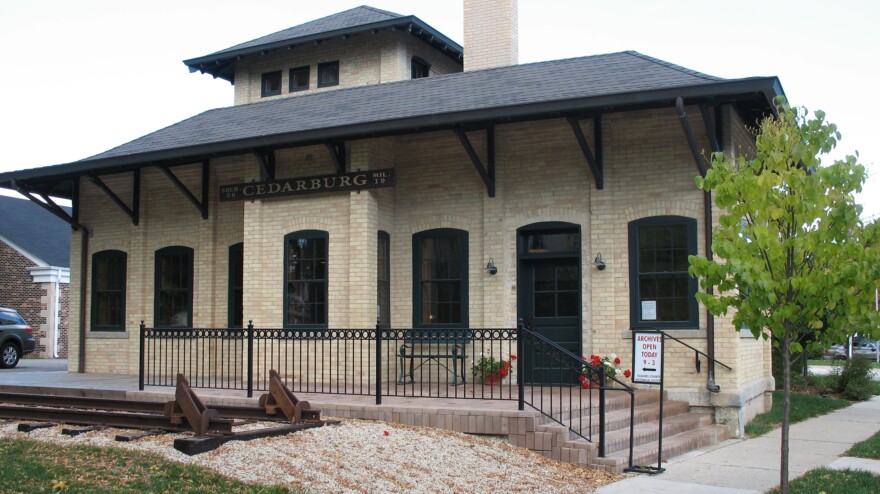Wisconsin has a nickname. You've seen it on license plates: America's Dairyland. And in Milwaukee, you may have heard this moniker: Cream City.
It intrigues Bubbler Talk listener Anne Bromfield, who asked: "Why was Milwaukee once referred to as Cream City?" The answer might surprise you. It has nothing to do with the dairy industry.
"Milwaukee's known as the Cream City because of the yellow, cream-colored bricks that were first discovered and made here in the 19th century," says Historic Milwaukee tour and membership coordinator, Josh Ballew. "Those bricks were used for many of the buildings and businesses -- breweries, schools -- throughout the 19th century."

To take a look at some of the creamy-colored structures, I met Josh at the old Schlitz Brewery complex on the northern edge of downtown. He says it's one of many places to see Cream City brick. "This is just a good example, pretty much due to the size."

Josh says cream-colored bricks were first produced in Milwaukee in 1835, and quickly became popular because of their pleasing color.
READ: Mino-akking, Mahn-a-waukke: What's the Origin of the Word 'Milwaukee'?
Architect Vince Micha has a fondness for the bricks, and is surrounded by them daily. He's with The Kubala Washatko Architects in Cedarburg. Its offices are in an old power plant, built of Cream City brick. Vince says you can find Cream City brick in older buildings up and down the coast of Lake Michigan. That's where the clay to make the bricks came from.

"What we have here in southeastern Wisconsin is the glacial lake deposits that deposit these silts and clays, and we can see them along the lakeshore of Lake Michigan and a little further inland. And that became a ready source of raw materials for making brick," he says.
Vince says builders began to choose other types of bricks, from other regions, when trains and improved trucking gave them more options. There were downsides to using Cream City brick. It's softer than some varieties, making the bricks less sturdy. And because of their porous nature, the bricks easily absorb soot, which turns them black.
He points to an example on the exterior of the old power plant. "That rusty muffler down there -- that used to be the outlet from the turbines, from the diesel fumes, and that black penetrated into the brick. And we did some testing on it and we could only get so far with it, and we said, 'you know what, that's the history of the building. We're going to let that be.'"

Vince says these days, most people appreciate the historic building material and have learned how to care for it properly.
And decades after the bricks' heyday, the nickname Cream City is still going strong. A number of businesses use it.
Take, for example, Cream City Caramels & Confections. Owner Gregg Hutterer says he chose the name Cream City to connect the products to Milwaukee, his hometown. Besides, he adds -- even though it's associated with building materials, not food -- it just has a certain ring to it.
"We thought because there's a lot of cream used in our caramels, that people who weren't from Milwaukee who wouldn't necessarily recognize the Cream City name as being Milwaukee, would think of cows and cream in that way."
Editor's note: This piece was originally published on Sept. 15, 2017.
Have a question you'd like WUWM to answer? Submit your query below.
_






